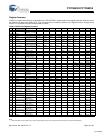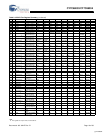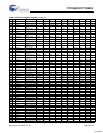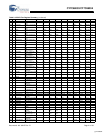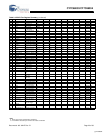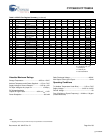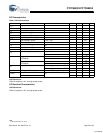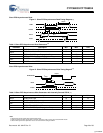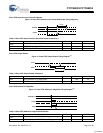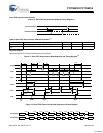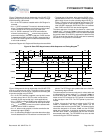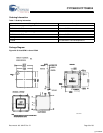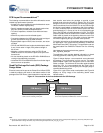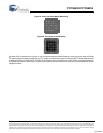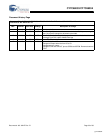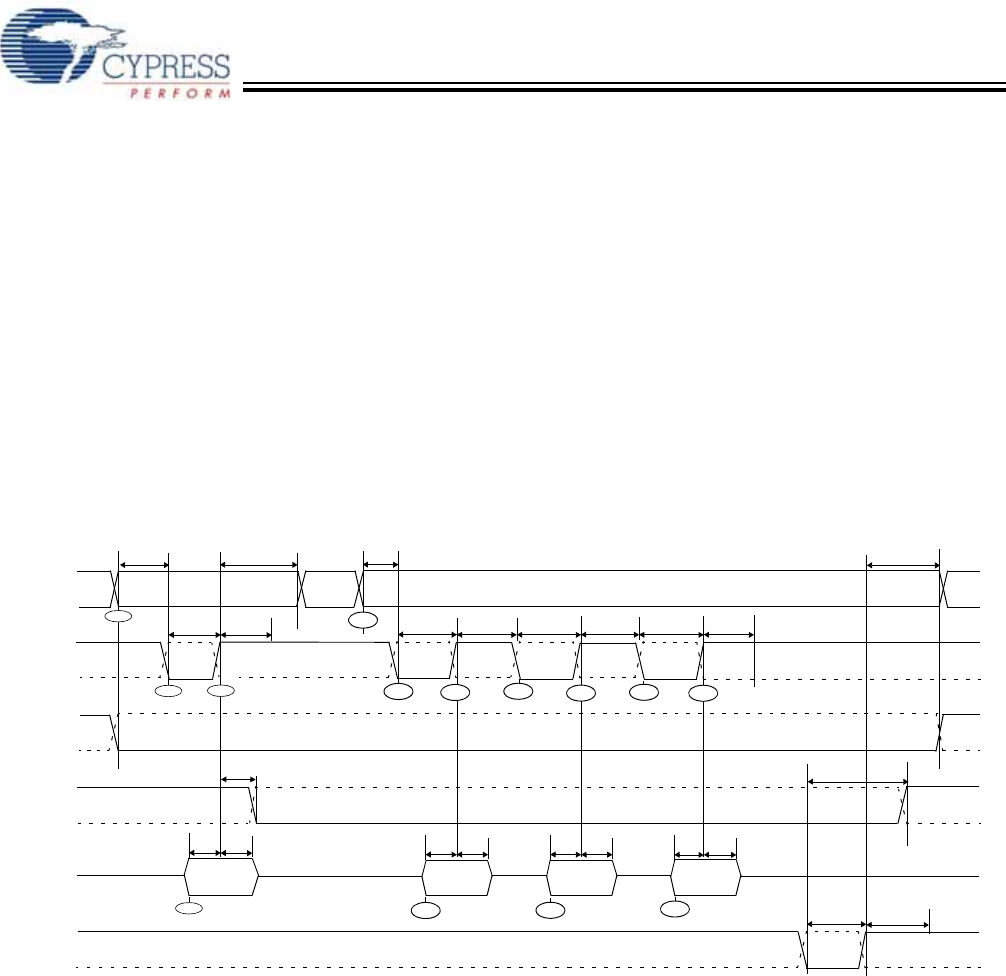
CY7C68033/CY7C68034
Document #: 001-04247 Rev. *D Page 29 of 33
Figure 17 diagrams the timing relationship of the SLAVE FIFO
signals during an asynchronous FIFO read. It shows a single
read followed by a burst read.
• At t = 0 the FIFO address is stable and the SLCS signal is
asserted.
• At t = 1, SLOE is asserted. This results in the data bus being
driven. The data that is driven on to the bus is previous data,
it data that was in the FIFO from a prior read cycle.
• At t = 2, SLRD is asserted. The SLRD must meet the
minimum active pulse of t
RDpwl
and minimum de-active
pulse width of t
RDpwh
. If SLCS is used then, SLCS must be
in asserted with SLRD or before SLRD is asserted (that is
the SLCS and SLRD signals must both be asserted to start
a valid read condition).
• The data that will be driven, after asserting SLRD, is the
updated data from the FIFO. This data is valid after a propa-
gation delay of t
XFD
from the activating edge of SLRD. In
Figure 17, data N is the first valid data read from the FIFO.
For data to appear on the data bus during the read cycle
(that is SLRD is asserted), SLOE MUST be in an asserted
state. SLRD and SLOE can also be tied together.
The same sequence of events is also shown for a burst read
marked with T = 0 through 5. Note: In burst read mode, during
SLOE is assertion, the data bus is in a driven state and outputs
the previous data. Once SLRD is asserted, the data from the
FIFO is driven on the data bus (SLOE must also be asserted)
and then the FIFO pointer is incremented.
Sequence Diagram of a Single and Burst Asynchronous Write
Figure 19. Slave FIFO Asynchronous Write Sequence and Timing Diagram
[13]
Figure 19 diagrams the timing relationship of the SLAVE FIFO
write in an asynchronous mode. The diagram shows a single
write followed by a burst write of 3 bytes and committing the
4-byte-short packet using PKTEND.
• At t = 0 the FIFO address is applied, insuring that it meets
the setup time of t
SFA
. If SLCS is used, it must also be
asserted (SLCS may be tied low in some applications).
• At t = 1 SLWR is asserted. SLWR must meet the minimum
active pulse of t
WRpwl
and minimum de-active pulse width
of t
WRpwh
. If the SLCS is used, it must be in asserted with
SLWR or before SLWR is asserted.
• At t = 2, data must be present on the bus t
SFD
before the
deasserting edge of SLWR.
• At t = 3, deasserting SLWR will cause the data to be written
from the data bus to the FIFO and then increments the FIFO
pointer. The FIFO flag is also updated after t
XFLG
from the
deasserting edge of SLWR.
The same sequence of events are shown for a burst write and
is indicated by the timing marks of T = 0 through 5. Note: In
the burst write mode, once SLWR is deasserted, the data is
written to the FIFO and then the FIFO pointer is incremented
to the next byte in the FIFO. The FIFO pointer is post incre-
mented.
In Figure 19 once the four bytes are written to the FIFO and
SLWR is deasserted, the short 4-byte packet can be
committed to the host using the PKTEND. The external device
should be designed to not assert SLWR and the PKTEND
signal at the same time. It should be designed to assert the
PKTEND after SLWR is deasserted and met the minimum
de-asserted pulse width. The FIFOADDR lines are to be held
constant during the PKTEND assertion.
PKTEND
SLWR
FLAGS
DATA
t
WRpwh
t
WRpwl
t
XFLG
N
t
SFD
N+1
t
XFLG
t
SFA
t
FAH
FIFOADR
SLCS
t
WRpwh
t
WRpwl
t
WRpwh
t
WRpwl
t
WRpwh
t
WRpwl
t
FAH
t
SFA
t
FDH
t
SFD
N+2
t
FDH
t
SFD
N+3
t
FDH
t
SFD
t
FDH
t
PEpwh
t
PEpwl
t=0
t=2
t =1
t=3
T=0
T=2
T=1
T=3
T=6
T=9
T=5
T=8
T=4
T=7
[+] Feedback



